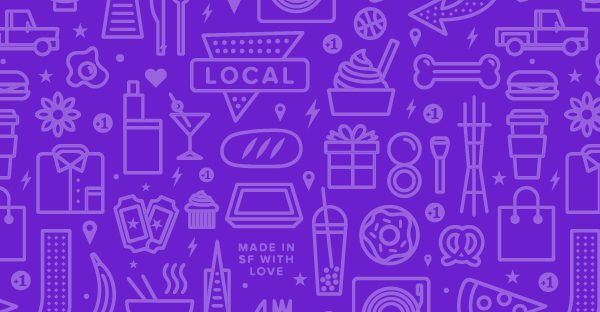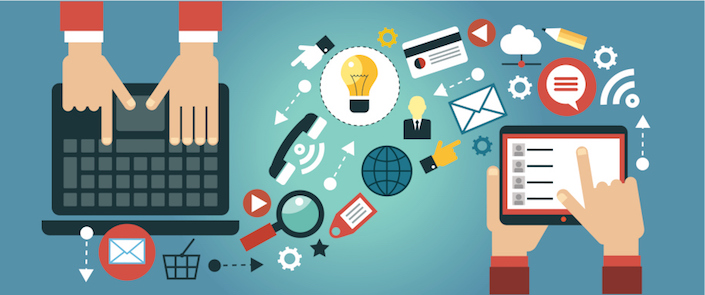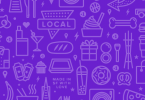Last year, 44% of email recipients made at least one purchase based on a promotional email. Are your emails driving revenue?
Many businesses use email marketing. But without a good strategy, customers may quickly move promotional messages from their inbox straight to the trash. Our newest eBook provides easy steps, like including a call to action and how to avoid being marked as spam, and other insights to ensure your email campaigns are bringing your loyal customers back in the door.
Check out this eBook and make sure your email promotions get your best customers visiting and spending more.
Loyalty Marketing, why is it important?
Experts agree that loyalty is the most effective and highest return marketing:
- “Customer loyalty is the single most important driver of growth and profitability.” – Harvard Business Review
- “Retailers with loyalty programs, on average, are 88% more profitable than competitors who do not.” – Deloitte Research Survey
- “It is 6 to 7 times more expensive to acquire a new customer than to retain an existing one.” – Bain & Company
Loyalty marketing is more relevant today than it has ever been:
- Your biggest asset is your existing customer base and foot traffic
- Data shows that loyalty programs can increase customer visits by 20% or more
- With social media, each of your customers can now share your brand with hundreds of others
- Technology can now automate most of your loyalty marketing needs
- It’s marketing that’s fun and makes sense!
Loyalty marketing ROI is traditionally driven by increasing visits, spend, and response to promotions
How Email Marketing Drives Loyalty
- Brings your best customers in the door quickly, or can drive immediate online purchases
- Customers prefer getting convenient messages from places they already go to, especially places they frequent
- Email promotions/newsletters can reach customers throughout the day, people check their emails on the go, as well as at work and at home
- Businesses can get creative with images and other content in emails
- Timely email marketing can build brand loyalty when you send good content, customers will begin to be on the lookout for your emailed content
- Good email campaigns can compliment your other marketing efforts
Email Marketing Stats
- 44% of email recipients made at least one purchase last year based on a promotional email
- 35% of business professionals check email on a mobile device (Source: Convince & Convert)
- 7 in 10 people say they had made use of a coupon or discount that they had learned about through a marketing email in the prior week or month
- 40% of customers claim to enjoy getting lots of marketing emails from their favorite brands each week (Source: 2012 Blue Kangaroo Survey)
Build customer loyalty by sending these types of email messages
- Exclusive email coupons/promotions, sales, or gifts for rewards/club members
- Newsletters with interesting content applicable to your audience
- Prompt website or social media visits, so they get your marketing content and specials on sites they already frequent
- Birthday or anniversary gifts or messages, showing customers you appreciate them or know them well
To start an email campaign, some things to consider before you start:
- Who is your audience? Who are the people you are trying to target? ex/College students, the business lunch crowd, little leaguers and families
- What is the goal you want to accomplish? ex/To announce an exclusive sale, to get more Twitter followers, promote Father’s Day gift purchases
- What actions do you want your customers to take once reading your email? ex/Bring in a coupon to your store, visit and like your Facebook page, make an online order
7 Steps for a Great Email Campaign
1. Make sure your email message is thoughtful and encourages an action
- When writing a good email message, you want to make sure to keep it short and to the point.
- Use persuasion tactics, like time expirations, exclusiveness, secret items or prizes, etc. to create a sense of urgency. For example, ‘The first 100 customers receive a free appetizer!’ plays on the customers’ fear of missing out. But use these sparingly since urgency can lose its effectiveness if done too often.
- Make sure you include a way to find you! Add addresses, relevant phone numbers, and an email they can respond to if they like.
- Most importantly, include a prominent call to action: what do you want them to do and when?
It’s easy to use holidays or seasons to create a sense of urgency in your emails.
- January – New Years Day
- February – Valentine’s & President’s Day
- March – Spring Break & St. Patrick’s Day
- April – Earth Day
- May – Memorial & Mother’s Day, Graduation Season
- Example: “Mother’s Day is this Sunday, you only have 4 days left to visit us to grab her a gift!”
- June – Father’s Day and Summer Break
- July – Independence Day & Wedding Season
- August – Back to School Season
- September – Labor Day
- October – Halloween & Fall Season
- November – Thanksgiving & Black Friday
- December – Christmas & New Years Eve
2. Include a relevant picture
People are visual creatures, so make sure to add a picture or two to help illustrate the message you want your readers to get. Photos increase the likelihood that your customers will click through your email, which means more customers visiting your website, calling you for a reservation, etc.
Some considerations to take into account:
- Keep images small so they don’t slow load time on less advanced Internet connections.
- Use images with people and faces in them.
- If you can, avoid stock imagery. It’s obvious and makes your email look less personal. And please, PLEASE don’t use clip-art.
- Finally, include a link in your images. People expect to be able to click through to something when they see an image. (Source: Simple Relevance)
Also, be cautious about ONLY using pictures in your email. If a customer’s email doesn’t load the images, or loads them too slowly, your customers won’t see any of your message, so be sure to always include some text, even if it is at the bottom.
3. Make sure your subject line is eye catching and interesting
You have about 2 seconds to convince a customer to open your email, or trash it. So you have to make it grab their attention using between 5 and 8 words.
47% of consumers make their decision about whether or not to open emails from business or nonprofits based on the content of the subject line. – Social Media Quickstarter
4. Some rules are meant to be broken, but laws are not
CAN-SPAM Act
- Don’t use false or misleading header information.
- Don’t use deceptive subject lines.
- Identify the message as an ad.
- Tell recipients where you’re located.
- Tell recipients how to opt out of receiving future email from you.
- Honor opt-out requests promptly.
- Monitor what others are doing on your behalf.
Check out https://www.business.ftc.gov/ for all the details!
Things that will be marked as spam are lots of punctuation marks, excessive use of the word FREE, misspellings, grammatical errors, and using all caps. Source: Constant Contact
5. Schedule your emails at optimal times and be cautious of number of emails sent per week
- Most messages land in people’s inboxes in the morning, which is why it is better to email in the afternoon. That is when it will be more likely noticed, opened, and clicked through.
- 45% of consumers decide not to open your email because you send them too many emails. Source: Social Media Quickstarter
- Always remember: Quality over quantity. So don’t send more than a couple a week! That way your loyal customers will eventually be on the look out for your emails since you send only the best content.
6. Train your employees to ask and make it super easy for your customers to give their email contact information
Top reasons people will sign up for your email list: To receive discounts and special offers (58%), to take part in a specific promotion (39%), or if they are a regular customer (37%). Source: Social Media Quickstarter
Try to capture the customer information on your point-of-sale* or computer, it will save you time in the long run. Display a marketing table stand at your checkout counter that tells customers all the incentives they will receive for signing up to your email list.
*You can use Fivestars to not only capture your customers’ emails, but also their names, phone numbers, notes about their purchases, their birthdays, and so much more. Send targeted emails to your VIP customers, as well as reconnect with customers who haven’t been back in a while, with the the Fivestars Loyalty Automation Platform. We integrate right on your point-of-sale! Check out https://bit.ly/demofivestars for more details.
7. Measure your success to improve over time
Track how many people visit from your email by including in your email message ‘Give email code MOTHERSDAY to your cashier at checkout to get your discount,’ and have your employees tally them up. Some email marketing programs give you open and click through rates; if so, compare the results across your different email campaigns. You may see patterns that will tell you which subject lines and messages perform better.
Want to start emailing your customer base? What are the current tools are out there?
- Constant Contact
- Mail Chimp
- GetResponse
- … and Fivestars Loyalty Automation Platform
Cue shameless plug!
Fivestars Loyalty Automation Platform: We take care of everything.
Fivestars is pioneering loyalty automation that includes targeted email marketing campaigns.
Point-of-Sale Relationship Manager
- Customer info right on the POS
- Never slow down the line
- Built in fraud control
Fivestars Card
- Simple technology that everyone can use
- Impossible to lose
- Over 800,000 cardholders
Customer Engagement Toolkit
- Simple segmentation
- Text or email campaigns
- Social media integration





Leave a Comment